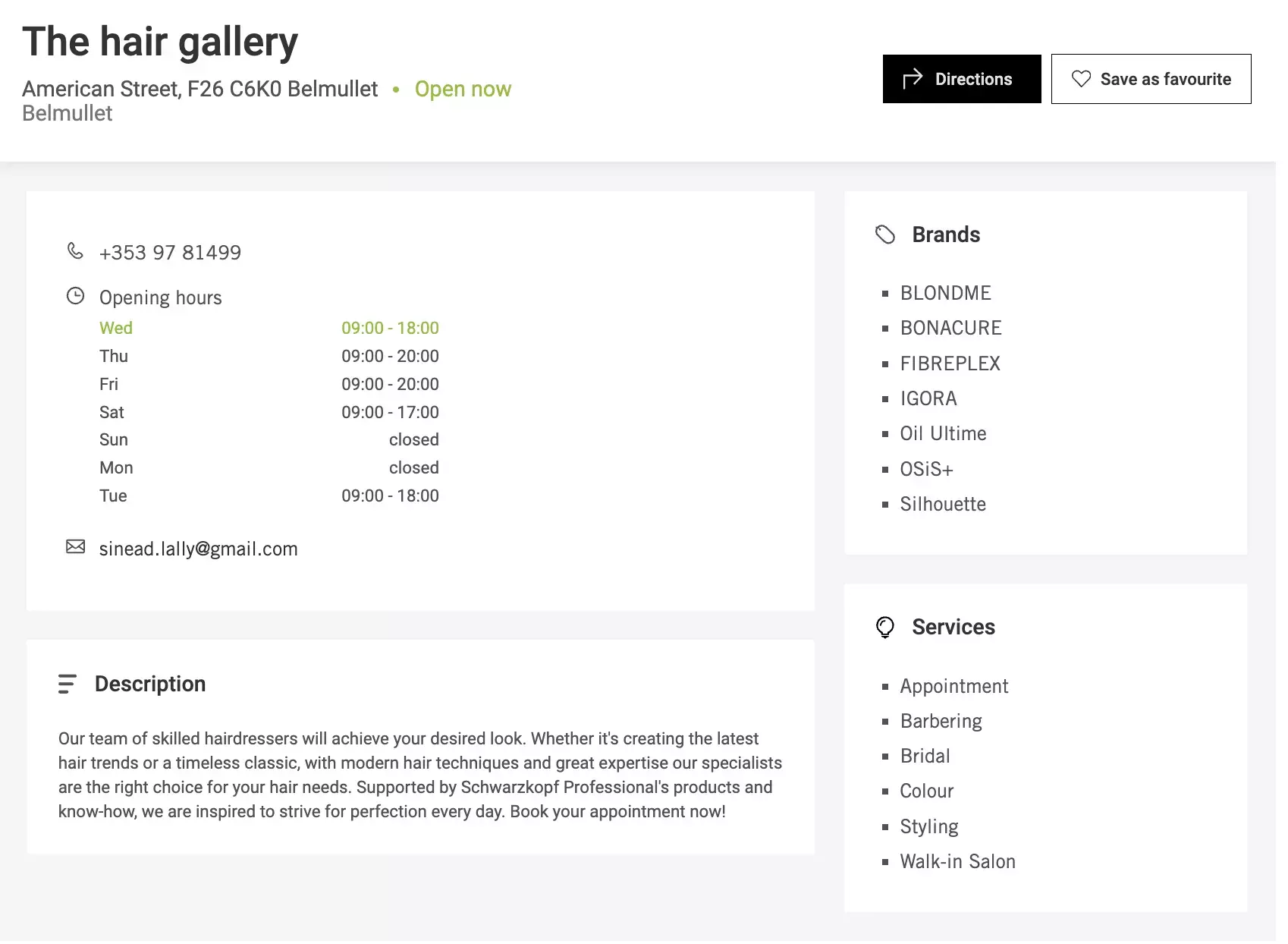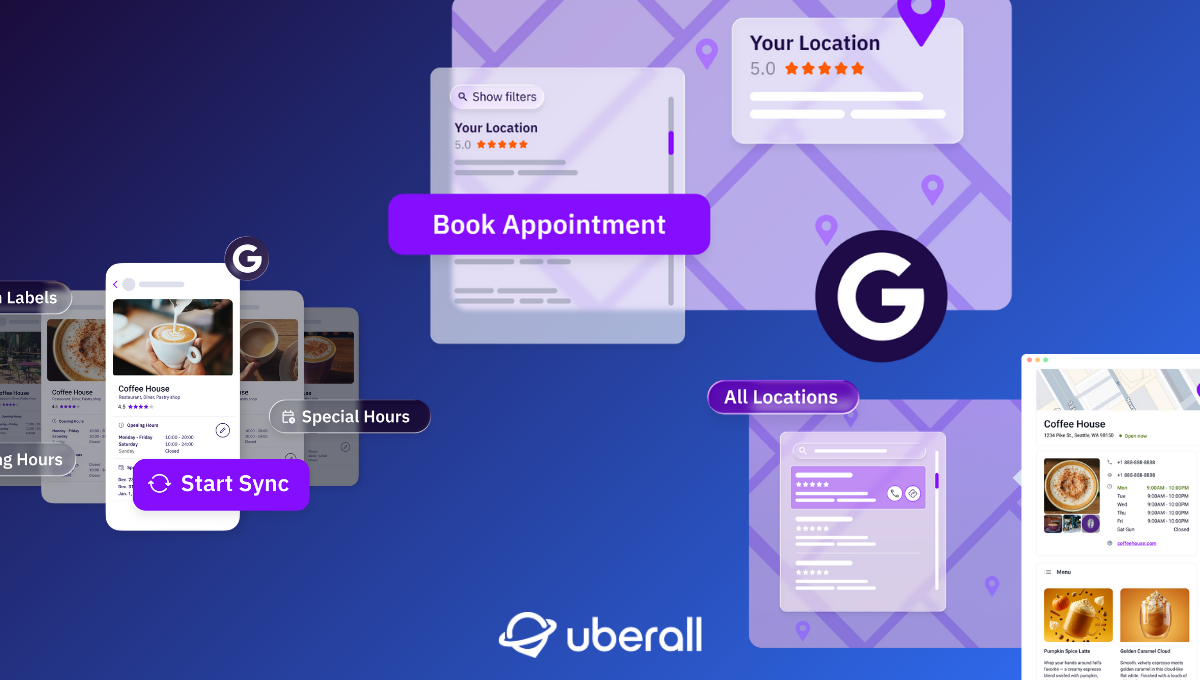
How to Create Content For Local Landing Pages For SEO
Get ready to explore the hidden gems of local SEO—local landing pages—and how you can elevate your business's online presence and engagement!
Navigating the bustling world of local search can feel like a treasure hunt for businesses and customers alike—but with the right strategies in place, brands can turn this hunt into a delightful experience.
Engaging content crafted specifically for local audiences can be the key to unlocking new connections, building trust, and ultimately driving success. Get ready to explore the hidden gems of local SEO—local landing pages—and how you can elevate your business's online presence and engagement!
Why Local Landing Pages Matter
A well-optimized local landing page enables your business to appear in relevant search results, especially in “near me” searches, which are becoming more and more common. In fact, Google records 1.6 billion local searches every day—and unlike your general website, these web pages are dedicated to a specific location.
What is the difference between location and service area pages?
Local landing pagesor location pages are dedicated to a specific physical location, such as a retail shop, and feature unique information tied to that address. In contrast, service area pages or service pages focus on broad geographical regions, catering to businesses that provide services across multiple locations, like plumbing or landscaping.
This distinction is important because services pages target a wider audience while location pages aim to engage customers at a particular site, enhancing local SEO and customer relevance.
The Concrete Benefits of Optimized Local Landing Pages
By creating content tailored to local audiences, businesses can build stronger connections with their community and rank higher on search engine results pages.
Higher Search Visibility
Google prioritizes localized content in search results, especially for users looking for services near them. A well-crafted local landing page helps businesses rank for location-specific keywords and appear on both search and maps platforms.
Increased Conversions
Tailoring content to meet the needs of local users increases the chances of them engaging with your site, leading to higher conversion rates. Localized content speaks directly to the customer, fostering trust and relevance.
Better User Experience
Local landing pages make it easier for users to find essential business information, such as addresses, hours, and services, enhancing their experience and likelihood of visiting your business.
Key Information Every Local Landing Page Must Have
To ensure a local landing page is effective for SEO, it’s crucial to include certain components.
Business Name, Address, and Phone Number (NAP)
Consistent and accurate NAP details across all local landing pages help search engines associate your business with the right geographic area, boosting your chances of ranking higher in local searches.
Also, NAP details should match exactly across all platforms—Google Business Profiles, directories, and the website itself, since discrepancies can confuse search engines (and customers) and result in lower rankings.
Hours of Operation
Displaying the correct hours of operation ensures customers know when they can visit or reach you, reducing any frustration from showing up during closed hours.
Search engines like Google also factor in this information, showing open businesses first in searches for “open now” queries. So better always keep these details updated, especially during holiday seasons or when special events affect your hours.
Local Keywords
Local keywords help search engines understand the relevance of your page to specific queries, like “best pizza restaurant in Brooklyn.” Incorporate these terms naturally throughout the page’s content—within headings, the body, and meta information—so that it enhances your SEO without keyword stuffing.
Moreover, target keywords that reflect common language and local dialect where relevant, as well as industry-specific terms and nearby neighborhood names for better targeting. For example, a spa in Los Angeles could optimize for keywords such as “luxury spa in Los Angeles” or “day spa in LA”.
Meta Tags & Descriptions
Meta tags (like the page title and description) and H1 tags should—first of all—be leveraged and then include relevant keywords to help search engines and users quickly understand the relevance of your business. These tags are a primary factor search engines use to determine where and when to show your business in search results.
For example, a bakery in Boston might use a meta title like “Fresh Artisan Bakery in Boston – [Business Name]” and a description such as “Visit our artisan bakery in downtown Boston for daily fresh bread, pastries, and custom cakes.” These help increase click-through rates by telling both users and search engines exactly what the page is about.
Google Maps Integration
Embedding Google Maps helps customers to easily find your physical location—whether through driving directions or street views. However, it’s more than just a user-friendly feature: it also reinforces the geographic relevance of the business, which is a strong signal for local SEO. For example, by including a map that shows nearby landmarks, businesses can provide context for both customers and search engines.
Calls-to-Action
A clear call to action (CTA) on local landing pages is vital for guiding potential customers toward desired actions, such as making a purchase or booking a service. It helps create a seamless user experience by providing straightforward next steps, increasing engagement and conversions.
By combining all of these core elements, local businesses can create well-rounded, highly optimized local landing pages that cater to both search engines and customers, leading to improved visibility, engagement, and conversions.
Additional Content to Boost Visibility and Conversion
Besides the most obvious information mentioned above, businesses can boost their local landing pages’ performance by adding the following content.
Customer Reviews and Testimonials
Featuring customer reviews and testimonials on your local landing pages, as social proof, builds trust with potential customers. By showcasing positive reviews, especially those mentioning specific locations or neighborhoods, you can enhance your credibility.
Moreover, reviews from trusted platforms like Google or Yelp signal to search engines that your business is relevant and trusted in the community; leading to higher search rankings and, thus, traffic.
Photos and Videos
Including high-quality images and videos of your business, staff, and customer interactions helps engage visitors and improve time spent on the page, whiusinech positively impacts your SEO.
Also, photos of your location, products, or services help build trust and give customers a sense of familiarity before they visit. Optimizing these visuals with local keywords in alt text or captions further strengthens your SEO efforts.
Local Events and News
Sharing local events or partnerships on your landing pages highlights your business’s active role in the community, which can boost your local SEO strategy, too. In fact, Google rewards businesses that are engaged locally, as it signals relevance to both search engines and users.
Location-Specific Offers or Promotions
Featuring offers prominently on your local landing pages can engage users searching for nearby discounts, while also improving your relevance in local search results. Seasonal or time-sensitive offers can be especially effective in encouraging immediate action.
Frequently Asked Questions (FAQ)
An FAQ section that addresses location-specific customer queries not only enhances the user experience but can also improve search rankings by targeting long-tail keywords. For example, answering common questions about parking, delivery options, or local services relevant to your business gives users valuable information and helps search engines index your page for more targeted Google searches.
Examples of Effective Local Landing Pages Across Industries
The type of content your local landing page needs will vary based on your business’s offerings, so we’ve gathered a few landing page examples from real customers to inspire you.
Restaurants
A restaurant chain like Pret A Manger should showcase its menu and seasonal offers, complete with enticing images to stimulate customers' appetites. By visually presenting delicious options, the brand can create an engaging experience that encourages potential diners to visit and explore their offerings.

Retail Stores
A fashion retailer like Ulla Popken should prominently display the inventory available at each storeas well as extra services and payment methods to inform customers. This extensive set of information also demonstrates the brand’s commitment to meeting their needs and preferences.

B2B / Franchise
Even for B2B brands like Schwarzkopf Professional, it’s beneficial to create local landing pages to equip partner salons with tools to attract customers effectively. This includes showcasing a diverse range of hair care and styling products tailored to various clientele.

Conclusion
Creating effective content for local landing pages is a crucial strategy for any business looking to enhance its local SEO and attract more customers. By focusing on essential details, adding relevant content, and using tools like Uberall’s platform to automate and optimize, businesses can ensure their local landing pages rank higher, engage local audiences, and ultimately drive more conversions.
How Uberall Can Help Optimize Your Location Pages
Uberall provides powerful tools for optimizing local landing pages, ensuring they are not only visible in search results but also engaging for customers. Uberall’s AI-optimized Local Pages in particular integrates key elements like NAP details, reviews, and maps, while maintaining a consistent brand presence across all locations.
Whether you’re a franchise business, retailer, or restaurant, Uberall helps you streamline your local SEO efforts, ensuring all your local landing pages are set up for success.
Ready to Transform Your Business?
Connect with our partnership team to learn how Uberall can help you achieve similar results. Get a personalized consultation and discover the opportunities waiting for your business.
Resources











